27th March 2022
The Spokesmen Cycling Podcast
EPISODE 294: Building a Better World — an Activist Planner’s Network Analysis of Bike Lanes in Paris
SPONSOR: Jenson USA
HOST: Carlton Reid
GUEST: Marcel Moran
TOPICS: This is a show about network analysis, specifically of the coronapistes of Paris but also how the University of Californina Berkeley has a strong history of what’s known as “activist planning” where there is an acknowledgement that scholars will want to build a better world. With Marcel Moran, a PhD Candidate at the Department of City & Regional Planning University of California, Berkeley
LINKS: Marcel’s study on Paris. Marcel on Google Scholar. Marcel’s website.

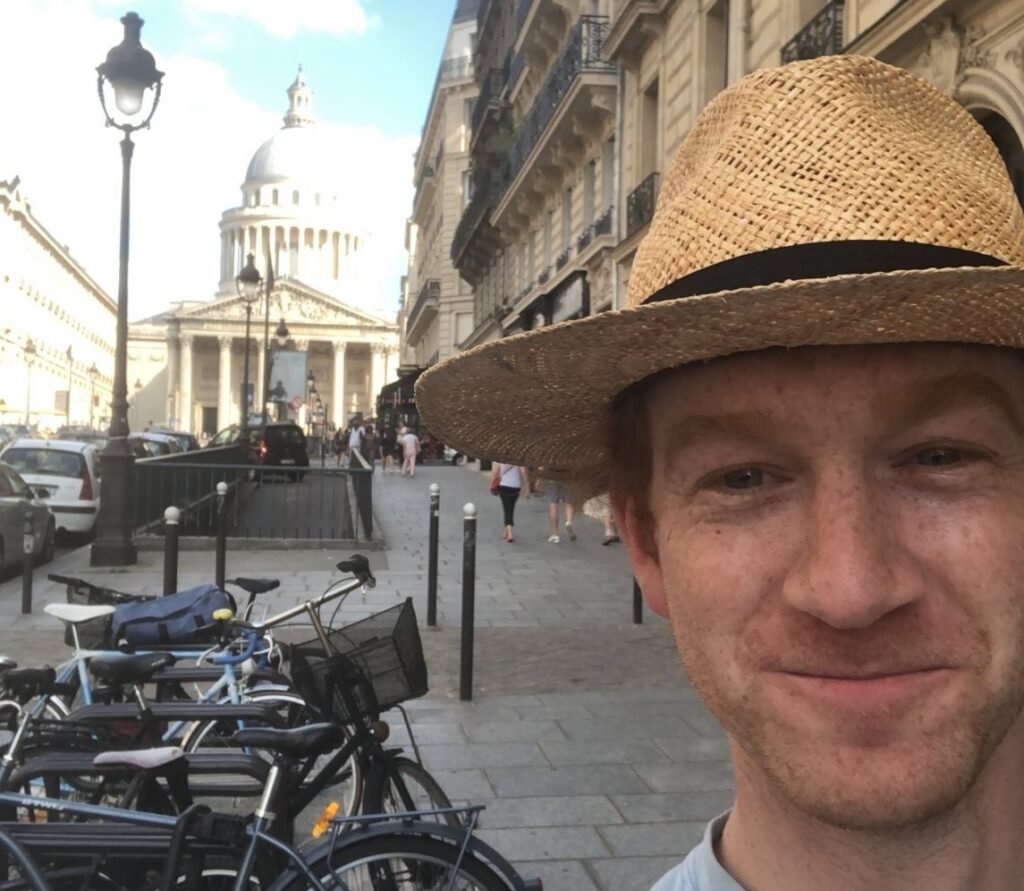

MACHINE TRANSCRIPT
Carlton Reid 0:13
Welcome to Episode 294 of the spokesmen cycling podcast. This show was engineered on 27th of March 2022.
David Bernstein 0:25
The spokesmen cycling roundtable podcast is brought to you by Jenson USA Jenson USA, where you will find a great selection of products at unbeatable prices with unparalleled customer service. Check them out at Jensonusa.com/thespokesmen. Hey everybody, it’s David from the Fredcast. And of course, I’m one of the hosts and producers of The spokesmen cycling roundtable podcast since 2006. For shownotes links and other information, check out our website at the-spokesmen.com. And now, here’s my fellow host and producer Carlton Reid and the spokesmen.
Carlton Reid 1:10
Thanks, David. And welcome to the show, which is a cerebral hour with Marcel Moran of the University of California at Berkeley in San Francisco. Marcel has a new study just out on the bike lanes of Paris, especially those which popped up during the Coronavirus lockdown. Remember that, at least became known as Corona beasts. And critically, they’re still active and are still boosting bicycling in the French capital. We also talk about network analysis, which is a lot more interesting than it sounds, and a whole bunch of other bike advocacy stuff, including how UC Berkeley has a strong interest in the activist planner, and acknowledgement that scholars will want to build a better world.
So Marcel, thank you ever so much for talking to me today. And I know today is also as you’ve just told me, this is the ICO publication day. So congratulations on your publication. So So tell me what we’re going to be talking about here because this is about Corona V. PC. Yes,
Marcel Moran 2:28
yeah, no, thanks for having me on. Today, my paper came out in the journal transport findings. And it’s called treating COVID with bike lanes. And what I wanted to do was I wanted to put Paris’s kind of growing network of, of bike lanes, and particularly how they short circuited their process for it in the context of COVID to kind of rapidly expand it. I wanted to put that into spatial context, I wanted to understand the quality of those new lanes and how they relate to the network that existed before the pandemic.
Carlton Reid 2:57
So why, why Paris? I mean, obviously, I know why Paris because Paris was was the poster child, for these pop ups during COVID. It was one of the first to really go for it. But by the same token, you’re not in Paris. So why Paris,
Unknown Speaker 3:14
unitary, I’m based in Northern California, although I moved, I moved to Paris for the project. So the reason why Paris, Paris has been getting a lot of press under the leadership of Mayor Hidalgo in terms of over the last five years or so really increasing their standard bike lanes outside of the pandemic, why find Paris to be such a useful case study is because Copenhagen and Amsterdam and German cities have been kind of studied to an extreme degree in terms of their very effective bike infrastructure. But Paris is actually you know, not really considered or hasn’t been considered a bicycle Haven, and anyone who bike there, you know, prior to 2015 would would never categorise it as such. And so I think Paris is such a useful case for other planners and urbanists around the world, because its rate of change has been so dramatic, and it’s starting place not that long ago, is quite similar, actually, to where many cities find themselves where there’s some level of bike infrastructure, but many, many gaps and many, many shortcomings. And so it’s actually much more relatable, no one can turn into Amsterdam in a period of five years, but what Paris has done in five or six years actually is much more attainable for the rest of the kind of transportation audience. And I also I find that you have this kind of interesting social construction changing to where per regions are now presented with this new kind of streetscape. And you’re just seeing the growth and ridership take off as well. Hmm.
Carlton Reid 4:47
Now in your in your paper, which I have, which I have read because it’s quite a short paper. It is yeah. Yeah. It’s short and sweet. But it’s fascinating and and what I liked about your Paper was you’re absolutely talking about, you know, the network capabilities here that the way that plugging gaps with with some of these routes, and you kind of you talk about the, again, the Dutch style network approach, but just explain that, but it’s not just about working in some great bikeways on, you know, really Rivoli, you’ve got to have bikeways, where you’re not going to be expecting loads of people, because you’ve got to fill in those gaps. So explain that, that that network approach that is the key to all of this. This is
Marcel Moran 5:34
this is a nuanced part of bike planning, and what I really wanted to shine a light on in this paper. So there’s increasing evidence that what matters to riders in terms of their willingness to bike in a city is not the overall length of a bike network, it’s not the overall amount of kilometres of a bike lane. But it’s how interconnected each lane is, meaning how many lanes overlap with other lanes, which then provide cyclists with a continuous path to reach their destination, where the greatest percentage of it is within bike lanes. And for big key at intersections, they can transition from one bike lane to another bike lane. And so when I was reading about before I moved to Paris, I was reading about Paris, increasing the length of its network. But the question I had was, but how is it changing the density of its network? How are the number of connections changing? And so what I did was, Paris has a very robust public data platform where they share information. And so going back to 2005, I looked 2005 to 2020. For every single lane segment that was installed, I calculated how many other lanes that connected to at the time it was installed. So you’re making this kind of time specific calculations, you say, okay, in 2006, how many other lanes were available that could connect to in 2007? Exactly, you know, etc. And what I find is that there’s this increasing trend of connectivity in Paris’s network that’s completely accelerated by their Corona, bike lanes, or what they call Corona piece days. And so the bike lanes that came in during the pandemic are not just protected to a greater extent, that was another thing I found, they’re not just more bi directional to a greater extent, but they connect to a hot they average a higher number of interconnections with other lanes. And that’s really going to kind of supercharge the benefit you’re going to give to prison cyclists.
Carlton Reid 7:36
So given that Deeth, it’s a loaded question him, but do you think that really thought about this? Because I’m gonna, I’m gonna, I’m gonna frame that question a little bit. Because here in the UK, and I guess in other places, there were some pretty daft bike lanes put in. Yeah, you know, why even? Why did you do that? It’s almost as though they were, you know, some local authorities, certainly in the UK, were almost just ticking boxes, and just putting a bike lane in which pretty much just annoyed motorists in many respects, I know it annoys motorists where you know, where you put them in? A really strategic roads, where you probably didn’t expect any cyclists would put us in there because there wouldn’t be the network connection there anyway, it will just annoy people. And also you just think they probably haven’t thought this through and then the rip them out. So the question is given given that as a as a preamble, do you think Paris actually got it? Right? Because they were thinking in network terms? Do you think when they put those bike lanes in, they were the right places?
Marcel Moran 8:39
It’s such a great question. And so I would say yes, and the way I answered that question was, because I know the year in which every single bike lane was installed, I could map how the network changed and grew over time. And so what I do is I create for these for different time periods, 2005, to 2009 2010 2014 2015 2019, and then 2020. And what you see is, you see the spatial decision making of Paris’s bicycle planners changing where their first decision spatially was to create this kind of ring of lanes around the periphery of the city. But what’s so interesting is the second time period, they’re actually doing exactly what you’re describing in England, they’re just doing a number of very short lanes. They’re not interconnected, really at all. And they’re not necessarily primary routes. And what’s so gratifying about looking at the 2020 map, is they really focused or you can tell I mean, what’s so interesting is, you could spend three months interviewing planners, or you could spend three months mapping it like I did, and you’re, you’re, you’re revealing the decision making that they did. And what happened in 2020 was they made all of these connections from Paris’s periphery to the city centre, doing long connected bike lanes that then filled really meaningful gaps. And there’s also there’s another I spent November in England, and there’s so there’s another important thing difference I found between London’s bike lanes and Paris is that so much of the bike planning in London emphasises these kind of quiet ways. Were explicitly choosing non busy commercial streets to kind of build up the cycleways. And what’s so fascinating about Paris and which I think is works better is Paris emphasise its grandest boulevards, which are full of destinations that cyclists want to reach. So the challenge I had in London was, you’re diverting cyclists, basically away from the kind of commercial civic and other destinations they’re trying to reach. But Paris said, we’re going to choose our primary streets, a that are the most direct pass between major points of interest, but be they’re also giving cyclists the kind of, they’re giving cyclists kind of the grand real estate that cars otherwise have enjoyed unfettered. And so I think Paris really, really thread the needle in terms of the kind of spatial thought thought process. And you can just see it in the map that it’s all these key routes from the outer Paris to the centre along the sand from major destinations, like Ray publique. And plus the Concorde. And really the left the Left Bank got a number of important north to south routes as well.
Carlton Reid 11:17
So this is this is textbook how you do it, then.
Marcel Moran 11:20
Mm hmm. Yeah, I mean, it’s really this is, again, why I think Paris is such a great case study is because they’re, they’re, they’re improving the network in an incremental fashion. And they’re there, they’re starting to benefit from this increased network effect over time, where because they laid the groundwork, starting in 2005. In that decade, they’d laid the groundwork for this kind of initial network that was starting to have some network coherence. In the last 10, the last seven years or so, they’ve really, basically looked hard at this and emphasised quality, connection, and location. So that’s the challenge when I hear when I read articles, or hear people or your cities boasting about the length of their network, the length doesn’t tell you that much. Right. And so you’ll see this a lot like Milan has this ambitious new plan for a bike network. But I don’t want to just know the length of it, I want to know where it’s taking, it can take cyclists to what level of comfort it provides to riders, and how each lane relates to the pre existing lanes. It’s the same way like we what we have to do and sometimes bike planners and bike scholars don’t think about this, is we have to think about this, how you would think about a road network, right? A road network that was very disconnected from itself, and full of dead ends and cold attacks and gaps would be really non functional. And sometimes we don’t apply that scrutiny to bike networks.
Carlton Reid 12:53
Absolutely. Bingo with a capital B, absolutely. With a capital A. at now, do you think do you have strong confidence that because of all that, what you’ve just said there, that these are the pop ups and the ones that in the previous years will last the distance? And again, I’ll kind of frame that by the UK example in that a lot of them did disappear, possibly because the motorists were moaning. So the council’s just, you know, they, they just they just lost faith and they just didn’t have the guts to keep going. But also because potentially they were actually not in the most brightest of, of places anyway. But nothing as far as I know, nothing has actually been removed from Paris. So Paris is unique in that it hasn’t taken these things away after the the the lockdowns have been over. So did you do you have confidence that they will stay around?
Marcel Moran 13:53
You know, it’s so interesting because Persians are not are not foreign to protesting by any by any regard. So I think there’s a few things happening that that bode well for Corona P stays in Paris. One is that mer Hidalgo, in her first term, doing really bold action in terms of sustainable transportation was handily reelected. And so she’s now serving in her second term. And since then, she had her administration has released an even more ambitious plan, a cycling plan for for Paris to be finished by 2026. And by 2026, the idea is that basically any major street in the entire city should be bikable should have some kind of bike infrastructure. So you have the political kind of leadership of Paris behind us and she has a wonderful team of planners. The other thing that’s happening is that per regions are taking to cycling like these, these facilities are being used in great number and so there’s a number of different ways you can measure this there are there are electric electronic counters. People that use apps like Strava, actually, or pat Harris, and Google Maps are having their data kind of passively collected and aggregated. Apple is doing things like this where they’re aggregating, transportation by mode. So we can see that cycling is increasing. And I think from a lot of evidence is getting more demographically diverse. The other thing is that, unlike the kind of London situation, this is a really key difference. So in London, the boroughs have much greater control over the bike lanes. And so if you’re biking from one borough to the next in London, you can kind of see a difference not only in the amount of sight of bike lanes, but in the quality. And so you can see that some are broad and well painted and protected, and others are slivers that give cyclists, hardly, hardly anything. And the difference is that in Paris, it’s been a centralised programme. And so if you’re in the left bank, or you’re in Bellevue, Bellevue, or you’re, you’re over by the Eiffel Tower, or wherever you are, the bike lanes are much more uniform and consistent. And so you’re not having this kind of patchwork level of quality. They’re not entirely can they’re not entirely consistent in terms of penetrance. For every neighbourhood, there’s some very wealthy neighbourhoods in the west side of the city that don’t have as much coverage. But there’s a more kind of uniform standardised approach that lends itself less to localised politicians at the neighbourhood level kind of creating problems or having those removed like you’re seeing it in the at the borough scale. I think the I think the final reason I don’t see them being removed is that since 2021, ended, Paris has actually gone back to its standard construction processes for bike lanes, and ploughed forward. So one of the things I noted in my paper is that the corona piece days are different in terms of construction. And so the the basic difference is that pre pandemic parents would use these long stone slabs to protect a bike lane to create it will be called vertical barrier. And that took heavy construction, you had to saw open the concrete place those in RE, you know, saw open the asphalt and so you would have this kind of big construction scene. And so the important difference for the corona pieces was they could be installed in a matter of hours, where they were staggered, concrete blocks placed on the sidewalk, not not cut on the road, not cut into it and kind of sealed and then you had plastic posts. But what gives me confidence that Paris is going to plough forward is that once the corona pee stay phase ended, and we realise we’re in this endemic kind of situation with COVID. They’ve kept going with the standard construction processes, bike lanes and and all 2022. So far, we’re in late March, they’ve been increasing the kind of standard construction bike lane. And so I don’t think there’s any signal either politically in terms of the bike activity, or in terms of the planning process. I don’t see any slow slowing down, particularly with the Olympics coming up.
Carlton Reid 18:09
Yeah, good point. I guess cyclists and and and prisons in general, have got Baron Haussmann to thank for many of these these as Coronavirus, because Paris does have some pretty mammoth li wide roads, it’s almost American in there. They’re weird, they are really sharp elisee that you can fit in, you could fit in Olympic sized bike lanes on that road and not take any way any real genuine space away from pedestrians or motorists. So you’ve got some pretty stonkingly wide roads in Paris. Does that help that you do have the space? If if you have the political will? You absolutely have got the space in Paris?
Marcel Moran 18:56
No, it’s absolutely true. And you can think of Ave de la opera as another prime example. I mean, it’s a massively wide street. And yeah, and this goes back to the to the kind of period between the 1850s in the 1880s, where you have this house musician of Paris with these broad avenues and the standard row row construction. The benefit is, is that there’s more room for the city to work with in terms of adding bicycle infrastructure without removing all of the car centric infrastructure out. That said, one of the things I was able to do with historical street images is asked the question, what are these Corona PCE days replacing? Because that’s another thing that’s sometimes left out of our conversation about bike lanes, you could say we’re adding in 47 kilometres of current pieces, which was my count based on public data and some observation, but the question is, what did those 47 Come in the place of where did we just take a painted bike lane and add a barrier? Or did we make a new bike lane? And so what I found was you had to street uses being replaced on street parking and mixed traffic. And so what’s interesting is Paris is not doing this painlessly in terms of motorists. They’re not just saying, Well, we have so much room, we can, we can keep all of the street uses equivalent. And so what’s interesting is there’s a scholar who, who talked about like, we’re at what he calls a mobility stalemate, that in a big dense city, to give any one mode of transportation space, you have to inherently take it away from a different mode, right, we have this kind of stalemate. And Paris is no different even with the really broad avenues. And so one way you could think about the corona PhD project, and the broader kind of bike bike lane project in Paris is that it’s the largest parking removal project in the city’s history. And what’s interesting about Hidalgo is administration is there actually don’t shy away from that rhetoric in terms of explicitly noting that there part of their work is to remove parking every year. And there are Scandinavian cities that have emphasised that explicitly, that’s harder to do in American cities. I think that’s true in the UK as well to kind of have this explicitly thing. But what parents has done it, I just want to make sure to get the numbers right here. So half of the corona pee stays replaced traffic lanes. So you’re taking away a lane that was used by cars, by taxis, by by trucks, and then a third replaced on street parking. And then there’s a kind of remaining 18% That just narrowed the other existing lanes, but half so half of these are removing car lanes for travel. And so it’s not, it’s not true that there’s been no kind of driver opposition or resistance. There. Certainly there have been some mass press articles, like in The New York Times, have been quoted with with certainly dissent towards these because they’re not just because the streets are wide doesn’t mean someone’s not losing out. Now, I think that the challenge, of course, is this becomes much harder on a narrower Street. And obviously Paris is full of narrow, narrow streets as well, that are that are on the sides of these grand avenues. And so what you’re seeing what the corona peace days is that they emphasise the grand avenues, where there’s actually more room to work with, although a number of them occur on smaller streets and they removed basically, there was a an on street parking lane and a traffic lane. And that the traffic the on street parking lane was completely removed for long sections of these lanes. So they’re, they’re doing the work and not shying away from the thorniest parts of bike planning.
Carlton Reid 22:39
See, I’m imagining some very, very angry French people on shock jock style radio stations, calling it an absolutely going ballistic over that. Can I know exactly what what happened? Yes. I mean, you take the slightest, you know, Breath of a liver of some space away from a motorist in the UK. And I’m guessing pretty much in the same it perhaps even worse in the US. Yes. And you will get a metric tonne of abuse from partly from the standard people who would you know, naturally come down on you anyway. But there’s just mass media would would also come down on anything like this. So this is always the difficulty for planners in the UK is interesting, be interesting to see how that how you think they’ve done it in Paris, is the abuse that plans will get death threats, they will get genuinely they have to call the police and because people will be out to genuinely kill them. So how do you think Paris? Maybe they have gone through that and they’ve just they’re just toughing it out? Or is there something else that’s happening in Paris that that they’re there, Hidalgo administration is able to just ignore that, or maybe doesn’t get it? So what happened? exactly have they managed to do it?
Marcel Moran 23:59
It’s so interesting. And, you know, every weekend i i stayed in Paris for last fall, and every single weekend, there were mass protests. But then we have the yellow vest movement. But by the time I was in Paris, the protests were all about COVID. And they’re about vaccine mandates and the and that they had this kind of passing Utair, this digital pass that you had to keep on your phone to enter into cafes and bars and those types of things. And that that was drawing the bulk of the ire from from protesting prisons at that point. So it’s a little interesting, I think, in some ways, because the COVID politics became so inflamed, in some ways, the bike infrastructure kind of had a smoother path, I think. I mean, right, exactly a little under. There’s a few things I think Paris has done strategically during this rollout that in some ways can mollify the worst criticism. One thing is that they’ve emphasised low delivery loading zones. And so one of the things you could see with the fresh Paint on Parisian streets that had had these Corona pieces installed is that somewhere on the street designated delivery loading zones have been installed. And that that can be one of the biggest critics of removing on street parking, or all the deliveries that have to take place. Obviously Paris is known around the world for it’s mixed use street life. Every street has a cafe and a bar and a restaurant and a store and those types of things. And so urban freight deliveries are a constant kind of piece of a Parisian Street. And so I think, taking that street use very seriously and not removing that the same way that kind of personal on street parking was removed. I think that was a key piece. The other thing that Hidalgo has said in her interviews around a lot of her policies is she makes this very interesting gendered argument. And she says, if you look at who owns cars in Paris, and who travels by other means, particularly transit, it’s the it’s largely men who own cars. And it’s largely it’s a majority of Parisian transit riders are women. And so in some ways, she has felt comfortable making these changes, because she knows what constituency she is fighting for, and fighting for the rights of non car travellers, who very often we know are lower income, more often minority and more often women. And so it’s been interesting to see her not shy away from that criticism and reframe it in a way of providing more transportation equity. Now, certainly, there’s no, it’s not criticism has not been absent. I think what’s been interesting is, I think the timing of her reelection, the release of the 2026 Bike plan, and the continuation of the standard bike lanes following this Corona peace day period, indicate to me resolve in City Hall to keep going. And I think what’s also happening is, you’re seeing the kind of this 15 minutes city idea come to life, which is that you’re seeing many more parents use cargo bikes, and they’re dropping off their kids to school in these and shopping for groceries and these. And you’re seeing you’re kind of seeing Parisian culture slowly embraces infrastructure, if you’re in some neighbourhoods in the morning, for the morning commute, the morning rush, these bike lanes are full, and there’s real traffic, if you’re so there’s a Sebastopol, which is the kind of major North South route in the right bank of Paris, which basically goes from the river sand to Garda Nord, the main northern train station. And that’s this wonderful long protected bike lane. I mean, there’s real there’s real traffic in that lane of all types and groups of people using that to commute to get to work to get to school to get to their errands. And so I think she had doggo is counting on the support and use of these lanes as drowning out the the smaller level of criticism.
Carlton Reid 28:02
Hmm. And you’ve talked about protected bike lanes, but you’ve also got protection by or separation by time. So going back to the the deliveries, so HGVs trucks that I’ve got to make deliveries, isn’t there some form of they brought in, you know that deliveries have to be done at a certain time. So it’s separation by time of day, is that something at work?
Marcel Moran 28:31
This varies by street, but you’re absolutely right. So there’s a number of neighbourhoods that have pedestrianised sections. But the timing in which that they are pedestrianised, either by signage, or by physical barriers, generally, is basically mid afternoon through the evening. And so mornings are when the streets are allowed to be used by Dubai delivery vehicles. And so in the right bank, there’s a number of these kinds of wonderful, like, right by Sondre Pompidou, there’s this wonderful corridor of restaurants and bars and shops and all these types of things, that’s pedestrian eyes in the evenings. But if you bike through in the morning, as I would have to do to get down to the centre of the city, you would see that full of these kind of delivery good trucks. And so that’s one of the things that I think American cities never do as well is saying, we can modify street uses by time of day and not just by not make a 24/7 rule. We in the US, we tend to have this kind of all or nothing approach where like time squares now pedestrianised in New York City, but it’s pedestrianised 24/7 This large chunk of it. But of course we could do this with much more nimbly, if we use the if we use the time of day to our advantage. And San Francisco is actually starting to do this with with these kind of major commercial districts where you’re pedestrian using it from lunch basically, or 4pm. Excuse me onward through the evening, which means It’s access for goods delivery during the day. Parents is doing that more often for pedestrians less often in terms of bike lane, no bike lane by time.
Carlton Reid 30:12
Mm hmm. Okay. Now, I’m sure there’s there’s there’s, you can explain this but data nodes I’m presuming here. Again, I’m going to go back to connectivity here. data nodes are going to have some sort of mechanism or quote in some some way of working out network connectivity. So the work that you’ve done, there isn’t just, you know, there’s lots and lots of lines on maps, yes, is on your PDF. But the must be quite apart from just a whole bunch of, you know, squiggly lines, there must be some sort of programme there. Data knows, like you use to say, this is a percentage or whatever, however you measure it connected, a road network, the motorist, you know, okay, that’s 100% connected, right? So is there such a quote that you use? And tell me about it?
Marcel Moran 31:04
Yeah, absolutely. I hope this study can be kind of a case that others could apply the same methodology to cities they live in, should the data be available. And even if the city doesn’t provide this data, there’s a wealth of data from sources like OpenStreetMap, that you could export and do this type of analysis. So network analysis is a scientific field on its own, that, that others and I’d followed in their path, I certainly not the first to do this, and others have tried to adapt to transportation planning, and particularly bike planning. So there’s actually a range of network statistics that you can run on a bike network, there are these things called small world networks, where you’re looking at actually like, how lanes, how lanes interconnected and more kind of complex way, like which lanes have the most connections to every other lane, that type of thing. And sometimes in a city like Paris, you could, the simple way to think of this is if there’s a grand avenue that has a bike lane, and then you have lots of little bike lanes that branch off of it, you can kind of realise that that Grand Avenue is the key and link and that entire network. So there’s many ways to kind of do this, the software I use very specifically, is I used ArcMap, which is a which is a private company called ESRI that builds this, but most people that have some kind of university subscription or access can use it. There’s also there’s QGIS, which is open source and very popular among the kind of GIS academic community. So there, you certainly don’t have to pay for this if you don’t want to. So the question I was doing was, I tried to make it as simple and replicable as possible. And the key thing I did was time. So what happens with most analyses of bioclean networks that I wanted to, I wanted to change slightly is most networks are analysed at one point in time. So you would look at the bike network and 2020. And you would say, how interconnected is it? Or you could say, what’s the average length? Or how, what’s the branching logic, those types of things, what I wanted to do was actually create a statistic for that for each year, so you could get the longitudinal change in that. So basically, the key number for me was a year of installation. And then from there, what I did was I basically turned back the clock to the very beginning. And so for each year, I’m creating a time specific connectivity. Figure, and very specifically, it’s for each lane segment, how many other lanes it intersects with. And so that’s as complicated as it gets. And then what the what I’m able to show is that over time, the number of lanes that have a higher number of connections that share keeps growing, and the number of lanes that have zero or just one connection, that share keeps shrinking. So that’s as complicated as I did it. There are certainly much deeper network analyses approaches. What but the key for me with this entire paper is I always want to create, I always want to do statistics that are legible to the general public and actionable to planners. And so if you’re a planner in a different city, trying to wrap your head around the connectivity of your network, it’s not more much more complicated to how many lanes is each lane connecting to which then is going to create this system that gives riders the most continuous path from their destination. And we know that that tends to really matter when you survey riders about what they’re looking for is that they want protected bike lanes, and they want interconnected by clans. And so that’s I use ArcMap I use carto a bit I did not use QGIS but that’s certainly available for those who want for free platform. And these were all shapefiles that I that I downloaded from Paris’s open data platform, they’re available to everybody to I never want to use proprietary data that other researchers can’t get their hands on.
Carlton Reid 35:12
So any planet in any city, worth their salt could fire up all these different software platforms could analyse their own city, and you know, without, you know, press the Where do I put bike lanes button, they could get the same information out, and then it comes down to well, they probably know where they’ve got to put these in this isn’t rocket science, right? It becomes down to you know, what do you value? That is what you you spend the money on? So you know, its budget, and its its political will? Yeah, it really is. It’s not it’s not it’s not geographical? These aren’t problems of where do we put these things in? I think people would probably know and then certainly the tools that you know how to put them in, it’s just we can’t get them in for the very well known reason. That’s That’s
Marcel Moran 36:00
absolutely right. And there’s this interesting kind of thing that happens, where there’s been a lot of work thinking about where should bike lanes go and trying to determine that based on where ridership is the highest. There’s a this counterintuitive problem without logic. In the end, the phrase goes, you don’t build a bridge based on where you see lots of people swimming. And so the idea is that we may want to build bike lanes where we’re already seeing lots of people biking, because we believe there’s some kind of latent demand to bike in that place. But we may also want to build bike lanes, where we don’t see lots of people biking, because they’re not biking there because they don’t have a protected way to do so. And so sometimes planners can walk themselves into the trap of only providing bike lanes on these kind of lower traffic streets where cyclists already are. But the idea is the planner can actually intervene on the highest traffic streets where actually there’s probably the most benefit to cyclists the same way the motorists are getting the most benefit. And so there’s a little bit it’s exactly what you said, there’s little question where bike lane should go. And a simple way to think about it is the bike network should be equivalent to the road network, right? Like we should not have this huge distinction between the road network and the bike network. People want to reach all destinations of a city safely have be a bicycle the same way people in cars want to be able to reach all destinations of the city. And so in some ways, the challenge and this is what Paris is proposing for 2026. And I’m really excited to track this. The challenge is to Say not Where should bike cleanse, go and bike infrastructure. But where Shouldn’t it be? And that’s it that there really are very few places we shouldn’t have safe bike infrastructure. And so the idea is to say like, let’s make these two networks closer and closer to equivalence.
Carlton Reid 37:50
Now, the digital twin concept, where you construct a basically a version of your city, in in a computer, and then you run the various models. I mean, presumably, that that can also you can you can build a bike network overnight. If it’s just in your in your computer, but the problem comes down to Yeah, it’s actually physically putting them in that that tends to be a problem again, so I’m kind of giving planners a lead out here. planners know what you got to do. This is not a planning problem. This is always a political problem.
Marcel Moran 38:32
Yeah, it tends, it tends to be a budget and political problem. What I would say is, there’s some really interesting data being leveraged in the transit planning field right now that I think is applicable also to bike planning. And so there’s there are these cool platforms. Remix is one example. Where it allows and a digital and a browser based platform, it allows transit planners to pilot a new bus route, just as an example on their screen. And then the the, the software pulls in all this interesting information in terms of density and demographics and population. And so it says, Okay, if you build the bus, let the bus route here, you have 100,000 people within a quarter mile radius, and this would really serve low income riders in those types of things. And you could do the exact same thing with your bike planning. You could say, Okay, we want bike planning, actually to be built in a really progressive way. We want to emphasise because we know car ownership is lower among lower income residents. We want to emphasise bike planning, right in our poor neighbourhoods, and we want to link them to employment centres into libraries into universities and all the types of things that a person wants for full, full civic participation. And so they’re certainly in large cities, there certainly are decision points for planners to make and they can think in terms of bike lanes, because they’re not going to have a full network, a full network that’s equivalent to the street network overnight. So I understand there’s a need to prioritise. And, and, and I’m, I’m the person sitting in the audience Maxine, you know, kind of charting this, but I understand the realities of being in the trenches and the difficulty of neighbourhood opposition. I don’t want to I don’t want to minimise that at all. And so I think the challenge for planners is, what what are you going to prioritise? Who are you going to prioritise everywhere and their decision, their decision points you can use to aid that process. And I think, I think kind of income is a huge one, I think, air pollution and so you seeing a lot of European cities, they’re very explicit that their bike plans are about curbing air pollution. You don’t see that as much in American cities where the idea is about cutting traffic and, and and climate change and those types of things. But local air pollution can really can really be one way to approach this. And so I think planners have a kind of range of options and ways in which ways to prioritise this. It’s exciting to see Paris, do this at a scale that is bringing the entire city
Carlton Reid 40:58
with it. Hmm. So Paris, that must be a pretty exciting place to go. I mean, presumably, you got funding? Did you get funding for this? Yeah, I’m
Marcel Moran 41:08
really lucky. So I’m a PhD student at the University of California, Berkeley. And I have I’ve, I have funding from my university, which has been really generous. Berkeley also has given them a shout out this wonderful Institute for European Studies. And I’ve been really fortunate to receive their grants. Before this trip, I did a research project in Vienna, Austria, and this year, I’ll be travelling to Stockholm, Sweden, with grants from from that institution. So only good things to say about my research support at Berkeley.
Carlton Reid 41:39
So you weren’t like a like a 19th century artist in a you know, starving in a garret somewhere. You were funded. Second, but you had an exciting time, fantastic place here for you to be but also kind of an awkward time to be there too, because you’re obviously studying, you know, infrastructure that’s put in place during COVID. But you’re there during COVID. So it was also an awkward time to be there. Yeah,
Marcel Moran 42:02
I mean, the fall of 2021. I was very lucky to thread the needle between searches and these COVID waves. And so the time the three months I was there. The past any tear system was present. And basically all destinations were open, I could go to the museums, I could go to restaurants, I could go to office buildings, I could rent co working space. I could travel on public transit, there were no kind of curfews there is no, I mean, I will say the Parisian lock downs from what how they were described, which does sound quite terrible. And people really were kind of scarred from the, you know, the limited access they had. And they were, they had to hold these notes and show notes to police officers that they want to go to the grocery store, that type of thing. I think what was so interesting is there are a few other pieces of Paris’s kind of transportation COVID response that aren’t in my paper that I certainly experienced. So one is that they expanded a lot of sidewalks for the benefit of pedestrians. So in the shopping district of Monterey, you had you didn’t have Nessus there were some new bike lanes. But you had these kind of bald plastic bollards that were allowing sidewalk traffic to spill into the street for these kinds of really dense shopping districts. You also had a lot of pedestrianisation new pedestrianisation and it was called this kind of Paris programme respira or clean air brief. And so in mind where I lived in a neighbourhood, there were a number of streets that had metal fencing that closed off a lot of side streets and number of streets that schools were on that completely closed off those streets to automobile traffic. And so you’re kind of seeing these streets returned to cafes, and children could play on them and parents could wait there to pick up their children. And so it was a multi prong approach obviously I dug into the bike side but that wasn’t all there was also there they’re increasing tree planting I mean there’s it’s a really kind of all of the above strategy in terms of tackling carbon emissions air pollution and what we call Vision Zero which is trying to reduce pedestrian and bicyclist and road fatalities and so it’s all working together. I think for those who have not been to Paris in a while and are interested in the kind of cycling experience you will be blown away by by your cycling experience there it’s certainly there is room for improvement and the city has has noted that in its new plans I mean they have they have a ways to go but it’s so satisfying to see it in motion.
Carlton Reid 44:42
What about scooters because because Paris does have it’s not just bikes and it’s not just they’re relieved the Bikeshare which I think was almost the catalyst for a lot of this you know believe when they put that in. I you know I was there from the beginning when I when I first started using believers and then just I’ve definitely Seeing the blossoming of that scheme has been fantastic. Very similar to London in many ways in that you’ve got bike sharing, and certainly, certainly a certain demographic, it’s certainly I would say Paris, it seems to be more tourists than it is in London. But anyway, so you’ve got scooters, yeah, as well.
Marcel Moran 45:20
Just watching it, rather than scooter. But so there’s a few things happening. And what I think what you’re seeing is, you’re seeing a number of different what we call micro mobility devices, shared bikes and scooters, you’re seeing them at different price points and vehicle form factors. So there’s valiev, which is yeah, the world’s basic one of the first real large municipal Bike Share systems. And then you have a number of electric dockless bikes. So lime has a really large presence in Paris, where you can rent these, these dockless bikes, then you have scooters, you have some scooters, that have shocks and and better brakes, and all these types of things. The the quality of the equipment on the scooter side has really improved since those launched a few years ago. And what I think what’s wonderful, the way I would describe it is you have this positive feedback loop, where you have an increasing number of options for people to travel not in the cars, that’s bringing a number of people into the fold into the biking tent, what I would say, it’s also giving them the point of view of taking a good hard look at the bike infrastructure. And so that’s creating a bigger and bigger constituency that is going to be supportive of more bike lanes, and then more bike lanes are going to draw more people into non car modes. Do you have one other Paris feature that’s actually supercharging people’s interest in bikes or to others, I would say one is strikes on transit. And so there is this period, where during the during COVID, where you had a really large transit strike, and you had more ridership of shared bikes and scooters than has ever happened in Paris, because these you know, these private firms track their ridership. And so you had this explosion of, of transit usage. I had friends in Paris who said this is my first time taking it but I have to get to work and Paris Metro isn’t running, you have to imagine a number of those riders were first time riders that are otherwise now going to be interested in using this. And the other thing you have happening besides the transit strike is that France also created a COVID benefit around a bike repairs. And so there was a voucher effectively or a rebate you can get I don’t I don’t want to miss the number of I think something like 40 or 50 euros. And you could you could have that paid by the government to fix up your bike. And so people that had long had bikes kind of wasting away in their basement or garage or hallway, could take those and get those fixed. And so you have all these types of things, bringing more people into the bike world, they’re going to be more sensitive to and demanding of bike infrastructure, more bike lanes are going to bring more people into that fold. And so, I mean, it’s just I needed to get there last year, because I just knew the timing was so unique in terms of this major world city, on its way to becoming a major biking city. And it’s, it’s thrilling, it really is. And it’s you know, it’s wonderful for all the other reasons Paris is wonderful.
Carlton Reid 48:20
Your academic, so you shouldn’t be saying it’s wonderful, it should be you should be measuring this, who cares, whether it’s one or not, you know, you’re you’re passionate, you’re totally, totally
Marcel Moran 48:31
sure.
Carlton Reid 48:34
But this is what I want to get onto because I have read your CV, your your academic CV, you are clearly you know, this is not our you know, one time a bit of research you’ve done and you’re going to go on to you know, completely different sectors, you are invested in this space, it’d be fair to say and we’re at the end of this conversation and when you’re new give your I’ll put the CV and the nose so people can see the breadth of stuff that you’ve done in this in effect this this you know, micro mobility and in Bike Share and and bicycles basically, and some pedestrian stuff that you’ve you’ve done. However, when you as I picked you up with when you said you know how wonderful this is and that maybe you’re a little bit too much invested in this fear. So how much of your your your academic rigour is actually maybe influenced by the fact that you’re really passionate about this. So my question is, how removed Are you from this academically when you are clearly very passionate about this and it’s almost the you know, the academic versus the activist, but that also means you may be not quite so dispassionate as somebody who is isn’t interested in this at all, and can look at it from that point of view. So describe the activism versus academic aspects of your work and your outlook.
Marcel Moran 50:10
It’s a really fantastic question. And I will, I will 100% say that I bike and take transit everywhere, both in Paris and wherever I’ve lived. I’ve always thankfully, I’ve been lucky to live in large cities with ample transit, Boston, DC, Chicago, San Francisco, Vienna, Paris. And so there, there are two answers I have to that. One is that Berkeley, where I’m based, UC Berkeley has a strong history of what we call the activist planner, and the advocate and advocacy planning, where there is a there’s an acknowledgement of the drive of the scholar to build a better world. And that motivation featuring into an influencing the scholarship. And so it’s not something that I shy away from. And the way I would describe, there are two ways I would kind of turn that on its head to, I think, make it sound more logical one is that if you take if you take what I’m doing, and we compare it to some other discipline of study, let’s say I was studying hunger, I was studying food food insecurity in the world, no one would be surprised to say that I was anti hunger and pro food security, right, that would say, I’m studying this, I want to study this, you know, deliberately and logically. But of course, my goal is for there to be less hunger and therefore be to be more food security. And so in the realm of transportation, what I see is I see a car centric transportation system in the United States and in some European cities, that has led to corrosive air pollution that has led to runaway climate change and carbon emissions and has led to, you know, scores, unreasonable levels of pedestrian fatalities. And so I don’t look at that dispassionately, I look at that as as alarming trends that need to be solved and need to be improved. And so that is a driving core of my work. I think of my work is ABC, anything but cars, because I see cars as specifically responsible and and central to what ails a lot of city life. So the other way I would I would put it is that this happens a lot sometimes in public meetings where you have someone say you have someone on a Board of Transportation arguing in favour of a bike lane and someone say, well, aren’t aren’t you a cyclist? Don’t you have some kind of conflict of interest fighting for this bike lane? And the way to always turn that around to say, well, are the rest of you car owners? Like do you car do car owners have this kind of conflict of interest, that we would say it’s a little suspect for a car owner, to be arguing against a bike lane because it serves their interests. So in some ways, people seem to be a bit more, a bit more sensitive to someone having a kind of sustainable transportation ethic, and then then wearing that that muddies the research where we worry less about someone who’s, you know, driving a polluting SUV having any kind of ethics, so So I don’t shy away from I’m a bike advocate in San Francisco and a member of the San Francisco bike coalition, I appear at city hall in favour of bike infrastructure. So I see the advocacy and the scholarship being beneficial to both that said, it’s really important to me that the work the academic work, and this is not my first paper, it’s really important me that the academic work stands on its own. And so I tried to be incredibly explicit about the methods, the materials I’m using, the conclusions I’m reaching, they’re they’re quantitative, they’re replicable. For many projects I’ve done, I’ve posted my original datasets on my website so that other scholars can download that I’m always willing to share the data. And I always source where I get it. And so I don’t ever want the work to have any type of Asterix next to it. And I don’t believe it does. My work, thankfully has been cited so far by other scholars, which is, which is always a really nice piece of validation. And I’ve worked with with planners and communicated my findings to planners. That said, I think that any dispassionate view of transportation systems in the United States would take some level of alarm around the status quo and believe that status quo to be unsustainable, so that’s my position.
Carlton Reid 54:30
Hmm. So on that topic, tell us how people can read your academic work, hopefully, free, so they can they can click into some of your papers that doesn’t have to have an academic subscription, and also, on this particular paper, so can people get this particular paper that you’ve written on Paris? In a free form?
Marcel Moran 54:57
Absolutely. Yeah. So um, and this paper also This paper is open access. So anyone can read the full text, they can download the figures, they can see the citations I’m citing, all for free, there’s no subscription needed. It’s, it’s in the journal transport findings. If you go to findings press.org, that’ll take you to the journal page. And this article is called treating COVID with bike lanes, design, spatial and network analysis of pop up bike lanes in Paris. A simple way you can find this is just going to my website, it’s www dot Marcelle moran.com. That’s my first name last name.com, where I have all my articles all available to read without any library subscription, I have all the PDFs, anyone, anyone can read those. And so Berkeley has worked hard to help it scholars publish in an open access way. So there’s actually a library fund I take advantage of and that fund can pay for the open access fee that journals require. And then so I can make sure my work is available to the general public. This is all available. Marcel moran.com. My email is provided on my website. It’s always fantastic to have people reach out that have questions or they want to do a similar study where they live. I’m thrilled to hear that tip thing. I have a profile on Google Scholar, you can just Google my name on Google Scholar Marcel Moran. And you can see everything, everything I’ve written. So it’s all available for free without any barriers.
Carlton Reid 56:26
Excellent. And that’s very comprehensive. Thank you. However, one more last thing, how can people because we reached out to me on Twitter, so how do people contact you? via other social networks? Specifically Twitter? Yes.
Marcel Moran 56:39
Yep. So I’m on Twitter. It’s Mark at Marcel E. Moran, ma RC e l e m o ra n. That’s my Twitter profile. I’m on LinkedIn as well. I have a UC Berkeley email address that’s on my website. You can contact me via email, Twitter, Twitter’s totally fine. You can send me a direct message. And I’d be happy to talk to planners, advocates, researchers and everybody in between.
Carlton Reid 57:07
Thanks to Marcel Moran, and thanks also to you for listening to Episode 294 of the spokesmen cycling podcast brought to you in association, as always, with Jenson USA. Watch out for the next episode popping up in your feed real soon but meanwhile, get out and run
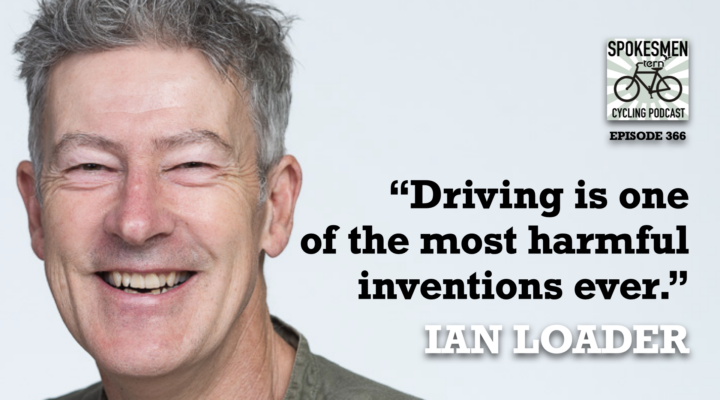
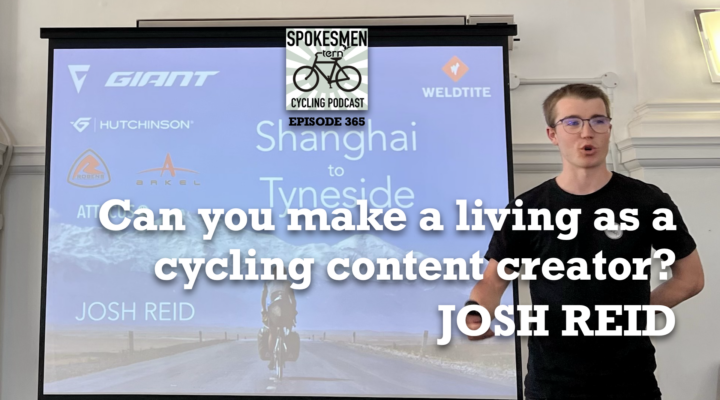
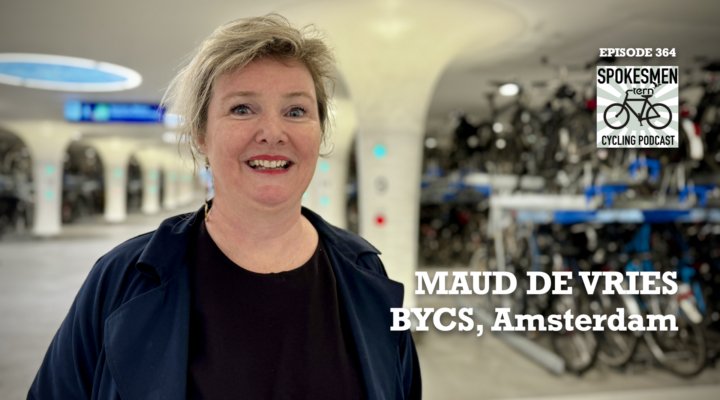
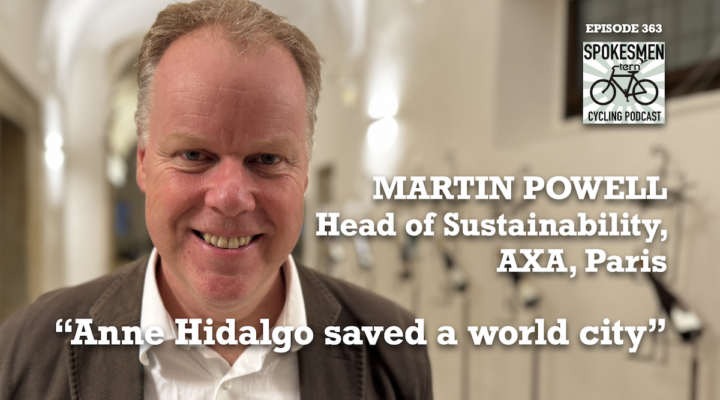
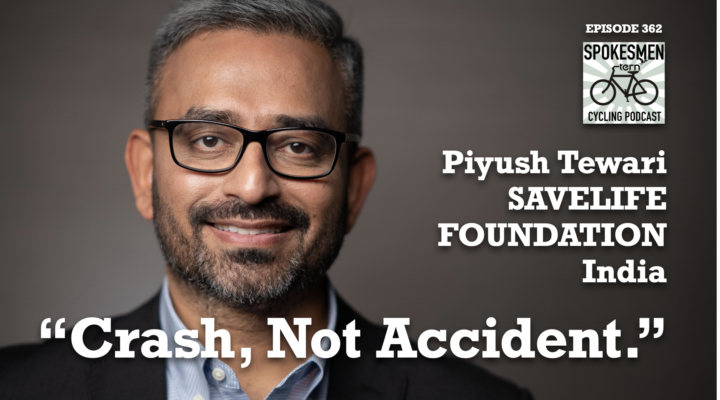
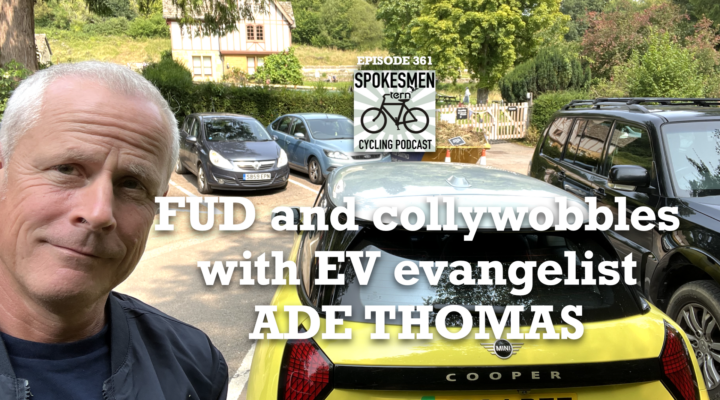
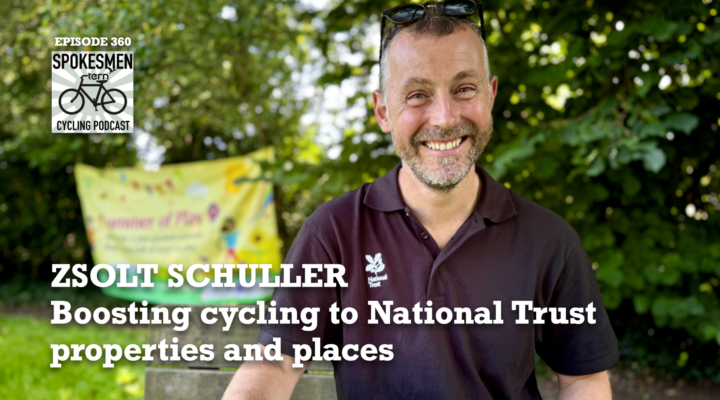
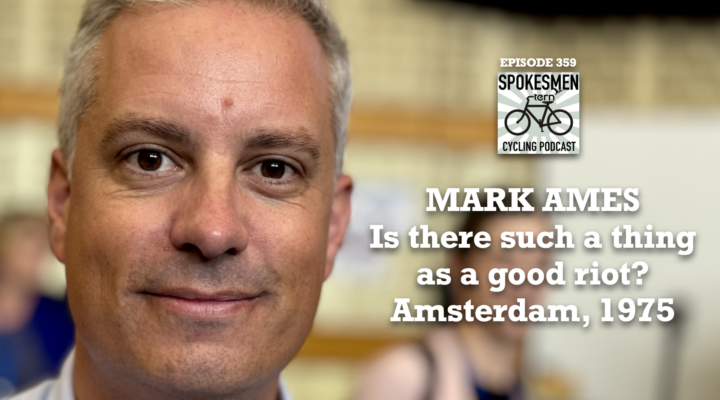
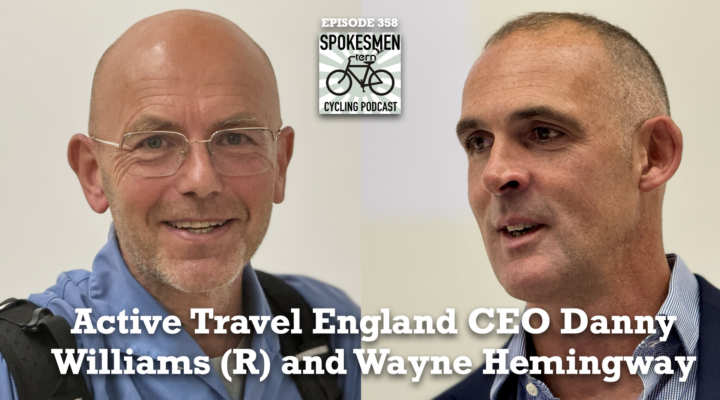
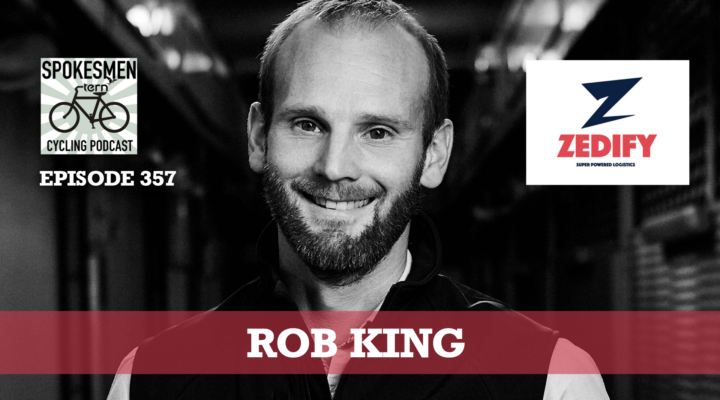
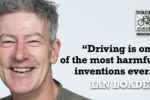


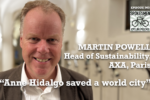
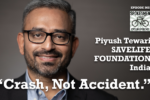


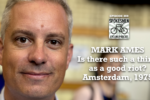


Be First to Comment